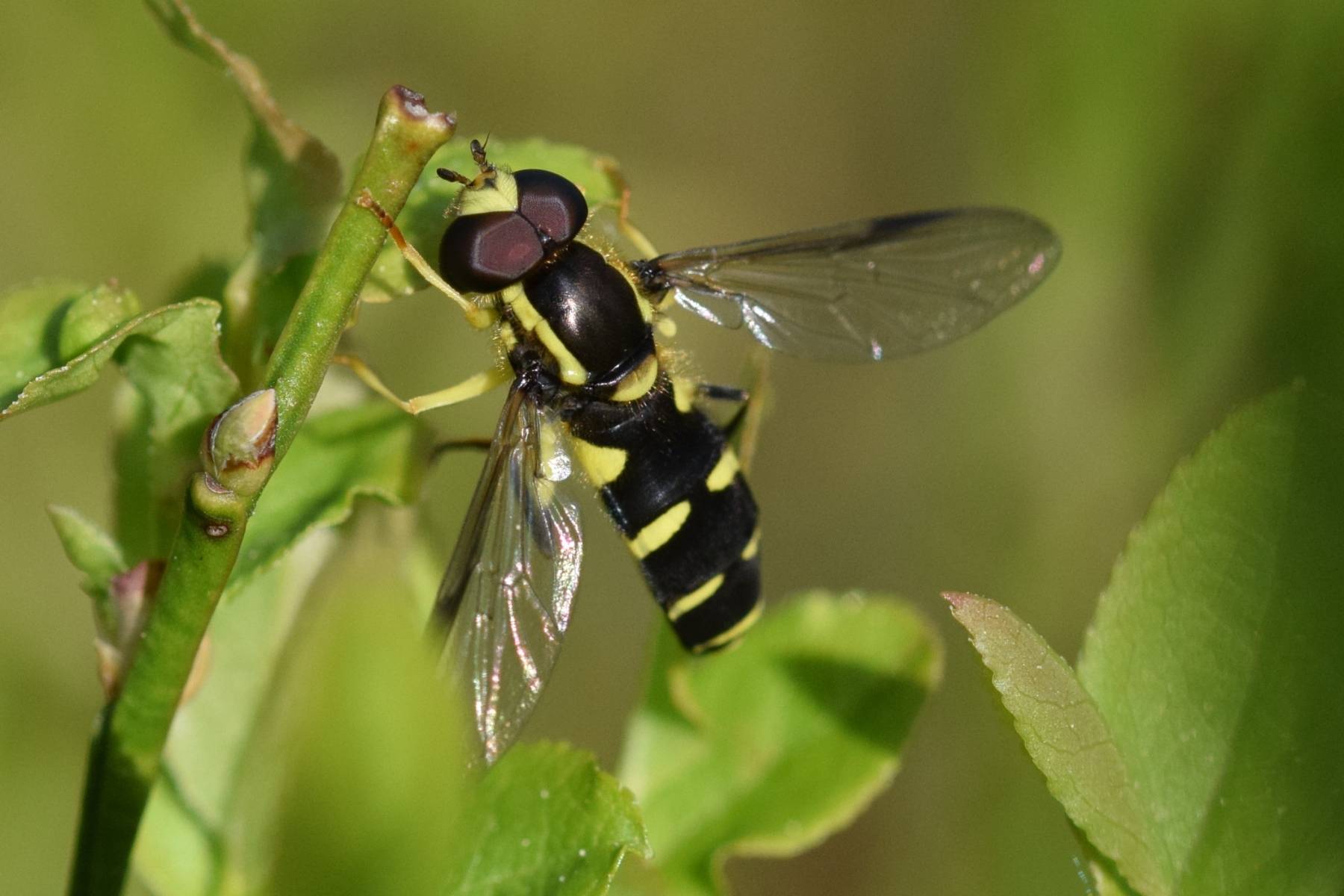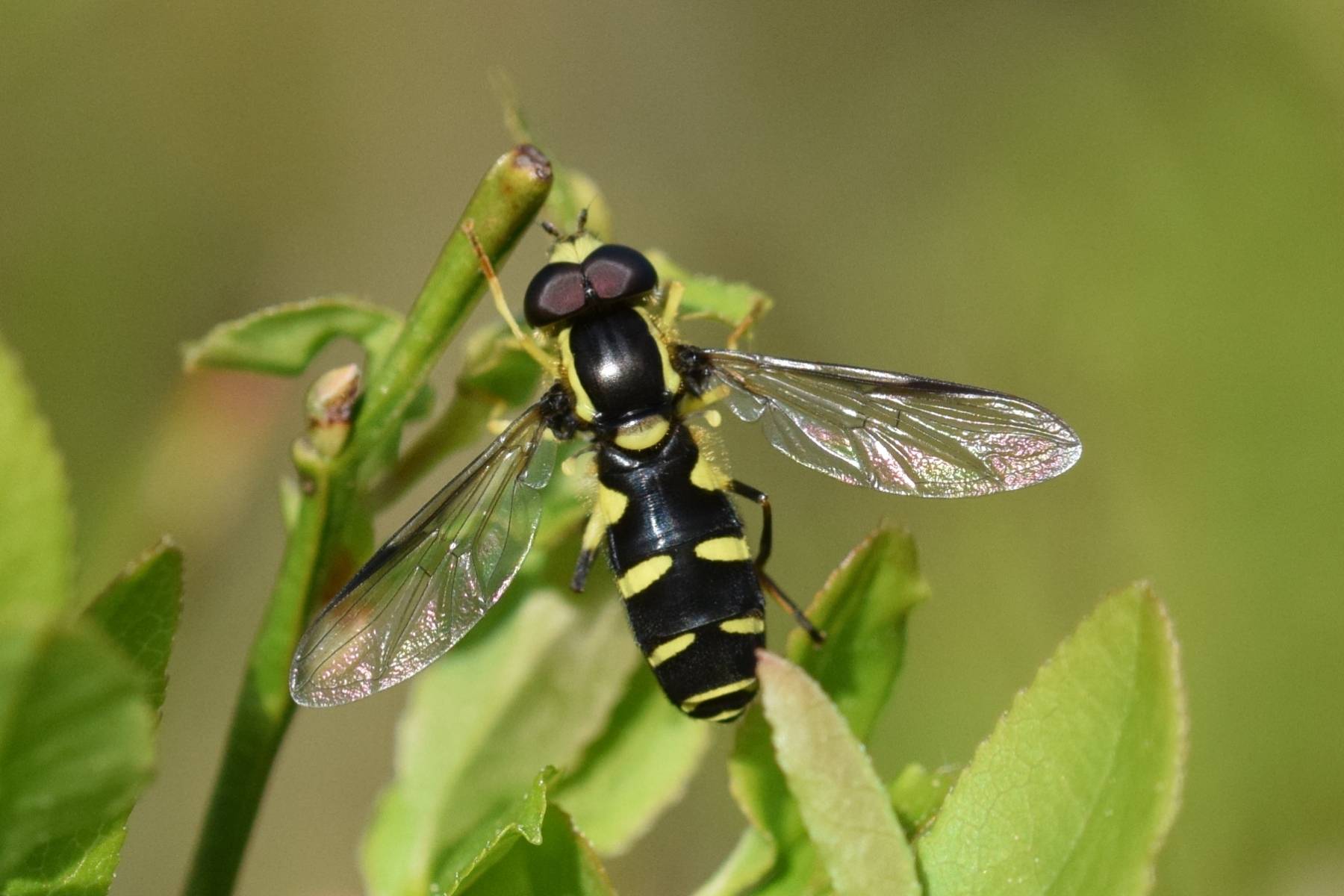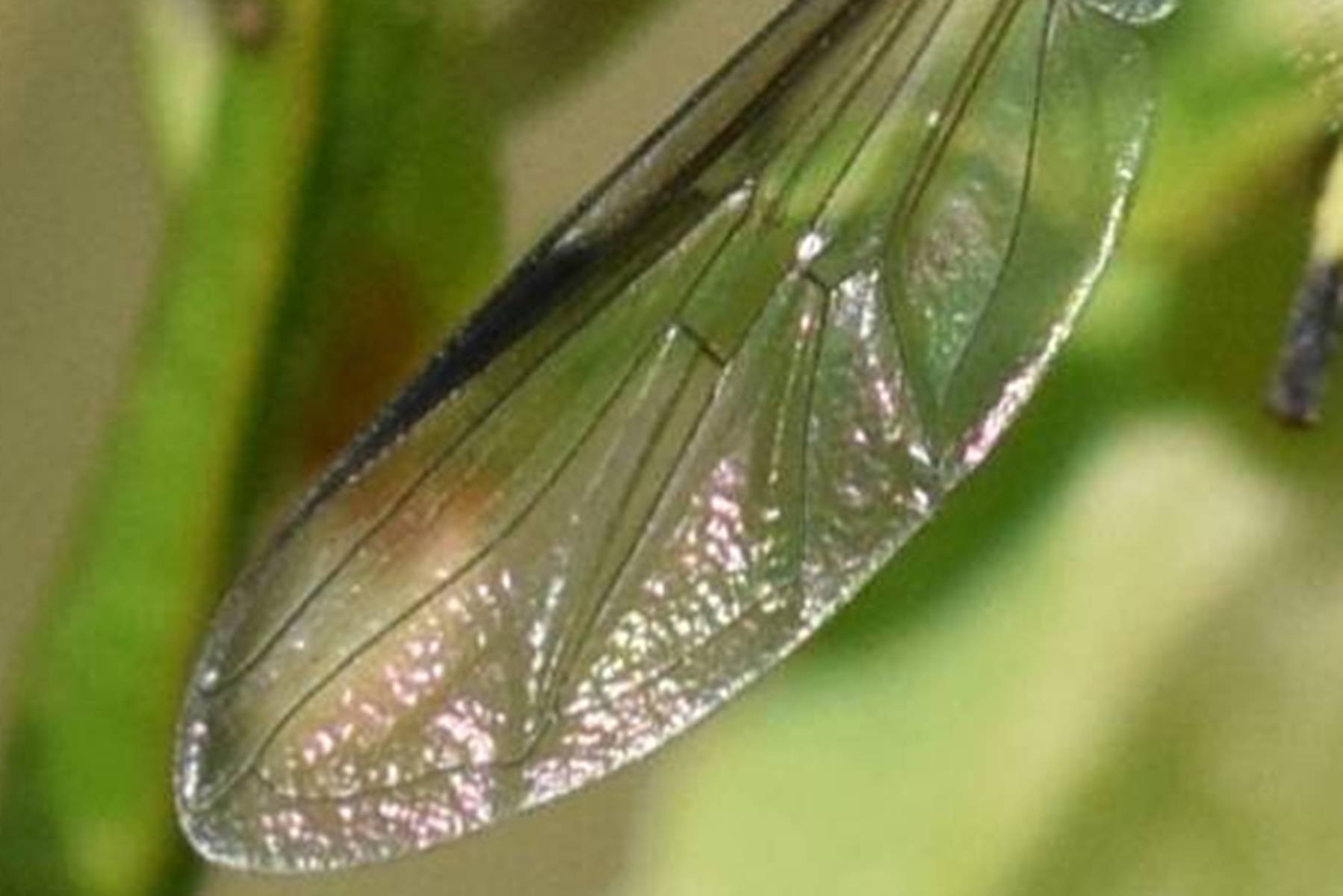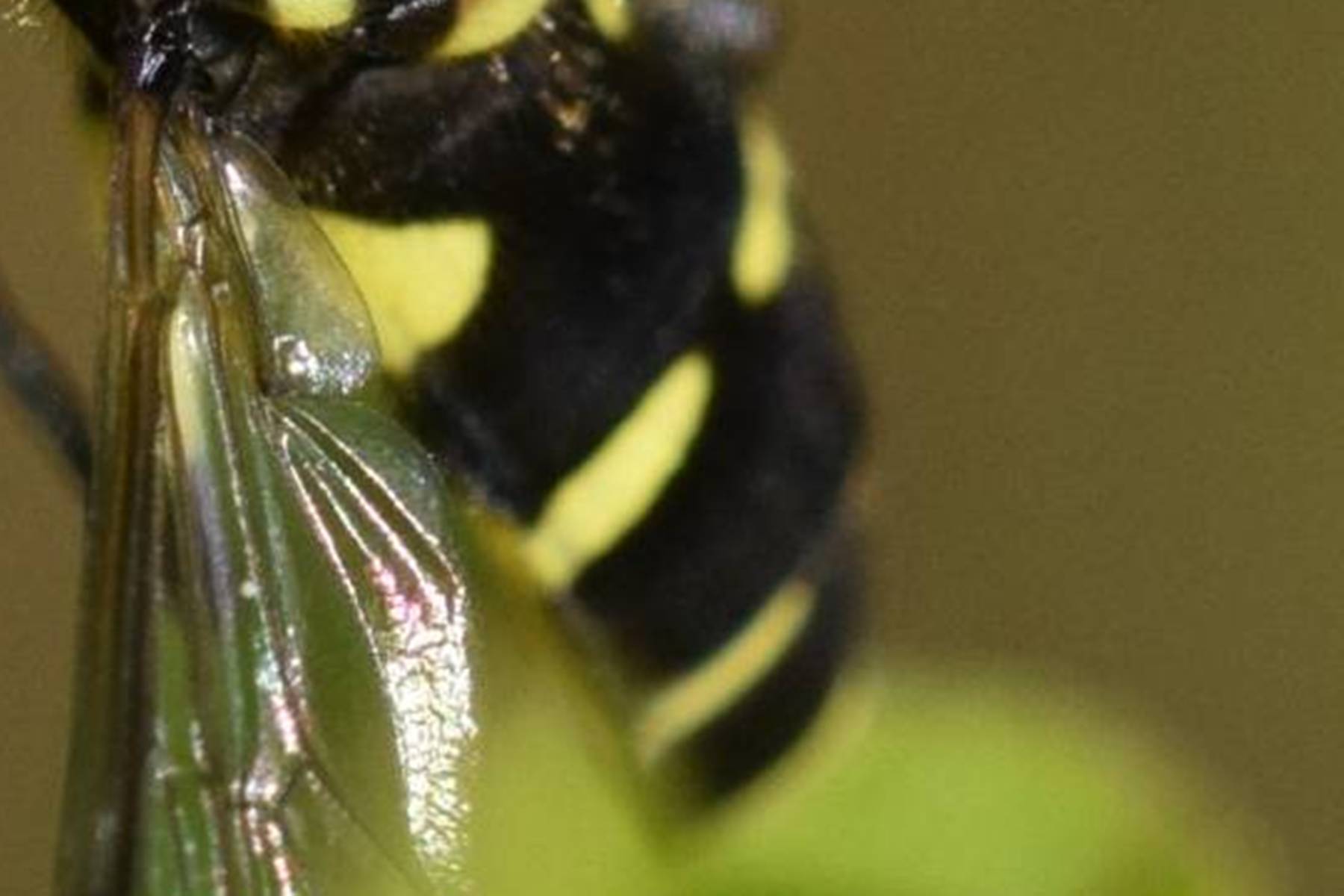Diptera.info :: Family forums :: Syrphidae
|
Xanthogramma stackelbergi? --> probably X. pedissequum
|
|
| Jann Wuebbenhorst |
Posted on 04-05-2019 17:20
|
|
Member Location: Northern Germany, Lower Saxony Posts: 606 Joined: 10.03.17 |
Photographed on 1st May 2019 within a dry pine forest (on pleistocene sand dune). Unfortunately I wasn't able to take a photo showing the abdomen from below. But the dark area below the wing stigma ends at radial vein R2+3. best wishes, Jann Jann Wuebbenhorst attached the following image:  [151.89Kb] Edited by Jann Wuebbenhorst on 27-01-2020 13:46 |
|
|
|
| Jann Wuebbenhorst |
Posted on 04-05-2019 17:21
|
|
Member Location: Northern Germany, Lower Saxony Posts: 606 Joined: 10.03.17 |
2nd photo
Jann Wuebbenhorst attached the following image:  [156.65Kb] |
|
|
|
| Jann Wuebbenhorst |
Posted on 04-05-2019 17:21
|
|
Member Location: Northern Germany, Lower Saxony Posts: 606 Joined: 10.03.17 |
3rd photo
Jann Wuebbenhorst attached the following image:  [144.05Kb] |
|
|
|
| Carnifex |
Posted on 04-05-2019 19:03
|
|
Member Location: Vienna, Austria Posts: 2011 Joined: 23.06.15 |
I think this is X. pedissequum. On the last photo one can just see the lateral abdomen with a yellow-dark pattern.
Cheers, Lorin Font Color All requests are from the urban area of Vienna, if not otherwise stated. My Diptera observations (and other living forms) can be found here, and corrections or comments over there would also be appreciated. |
|
|
|
| treebeard |
Posted on 04-05-2019 19:08
|
|
Member Location: Slovakia Posts: 614 Joined: 13.08.13 |
I am not sure, if your images are enough to distinguis it from X. dives or pedissequum, but try these sources: https://www.flickr.com/photos/63075200@N07/sets/72157632548622900/ https://www.flickr.com/photos/124453649@N07/sets/72157644972155380/ Edited by treebeard on 04-05-2019 19:09 |
|
|
|
| Jann Wuebbenhorst |
Posted on 04-05-2019 20:48
|
|
Member Location: Northern Germany, Lower Saxony Posts: 606 Joined: 10.03.17 |
Hello Carnifex and Treebeard, many thanks for your hints and links. I add two photos of details from the first and the third image. I think it is clear that the dark wing patch does not extend below radial vein R2+3 - this is the first feature mentioned by van Veen (2010) for differentiation of pedissequum and stackelbergi. On the links provided by Treebeard this is also very clear to see. The second feature used by van Veen is the abdominal membrane, which is entirely yellow on segments 3-5 (but dark at the posterior part of sternite 2) in stackelbergi. The Finnish key provided on Jeremy Richardson's Flickr-Site uses the same features. On the 5th photo you can see that the abdominal membrane is dark at the posterior part of segment 2, but for the following segments it is not really clear - to me it seems to be only yellow there. Concerning the habitat, Ball & Morris (2013) say that X. pedissequum in Britain is predominantly a grassland species and stackelbergi "appears to be a woodland edge species". So altogether, I think that "my" specimen is quite likely stackelbergi - or dives, but this species is not included in any of the identification keys I know. And as this is a male, I have no clue how to distinguish these two. Jann Jann Wuebbenhorst attached the following image:  [127.99Kb] Edited by Jann Wuebbenhorst on 04-05-2019 20:53 |
|
|
|
| Jann Wuebbenhorst |
Posted on 04-05-2019 20:48
|
|
Member Location: Northern Germany, Lower Saxony Posts: 606 Joined: 10.03.17 |
5th photo
Jann Wuebbenhorst attached the following image:  [120.49Kb] |
|
|
|
| treebeard |
Posted on 05-05-2019 17:14
|
|
Member Location: Slovakia Posts: 614 Joined: 13.08.13 |
According to STN Key to species, both dives and stackelbergi have the mebrane between tergites and sternites yelow (except for between tergite and sternite 1 and tergite and sternite 2, where there is a broad, distinct, dark-grey band). In Slovakia I know just one picture of X. dives: https://www.fotonet.sk/?idp=115504&SETrp=3f6964693d&loc=2&page=1 This membrane is probably not visible in your pictures. Without it, it very difficult to exclude pedissequum. In the STN key, the differences between dives and stackelbergi is described. Without seeing this membrane, I would rely on the shape of yellow spots on the tergite 2 (described by Steven Falk), but this matches mor to pedissequum. Of course, I am not an expert  |
|
|
|
| Jump to Forum: |












